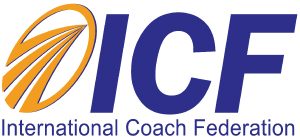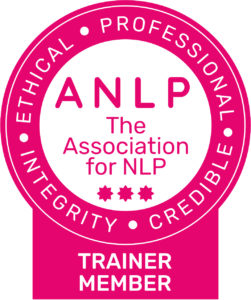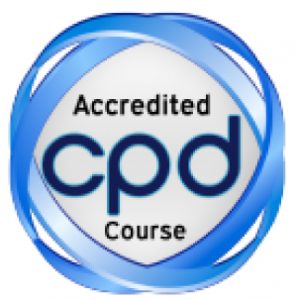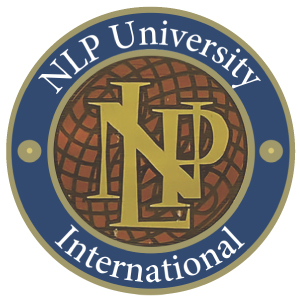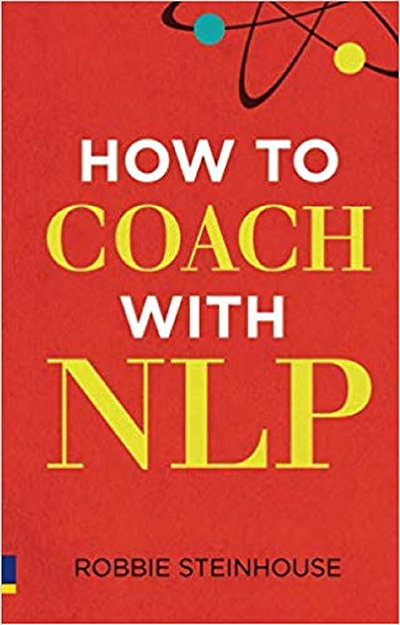I believe that NLP is the secret that makes coaching so powerful. It takes the mystique of the great coach and breaks it down so it can be learnt by anyone, taking the implicit approach of coaching and making it explicit and understandable. In support of this belief, I find that most of the best coaches I come across have also studied NLP.
The two disciplines are effectively ‘made for each other’. On this page I shall show both why this is the case and how, on a practical level, they can be melded together to create something more powerful than either on their own.
I’ll begin with very brief histories of the two disciplines:
A very brief history of coaching
In the 1970s in California a tennis coach who had been influenced by the 60s generation tried a new permissive approach to his job; he basically let the students ‘have a go’ and didn’t interfere with too much ‘teaching’. The results where so powerful, that a TV documentary was made about him – it tried to mock his methods, by getting him to teach an overweight lady with no tennis experience. But she learnt very fast… The coach, Tim Gallwey, wrote The Inner Game of Tennis and a number of other books in the ‘Inner Game’ series. The principle was transferred into business by a British student of his, John Whitmore, who wrote Coaching for Performance.
Meanwhile, new trends in both therapy and business were evolving.
In the 1960s a therapist called Carl Rogers begin to challenge the medical approach of Freud and developed what he call ‘client centred therapy’. The principle behind this approach was to treat the client as an equal and hold them in what he called ‘unconditional positive regard’.
In the 1950s and 60s as the field of business became professionalized, and business schools and MBA programmes began to spread across the world. Organisational models began to mushroom. Peter Drucker, a professor at NYU, became the founder of a new profession: the business philosopher.
These new approaches to sports, therapy and business – the Inner Game for sports, the Rogerian therapeutic relationship, and a more structured approach to career success – combined to create a new field called ‘coaching’. There are now over 120,000 coaches working across the world and a number of coach accreditation bodies, the largest of which is the International Coaching Federation. Coaching both formally and informally is a feature of many of the world’s largest organisations including HSBC, Glaxo SmithKlein and the BBC.
Life coaching has also become a huge growth area. It is a central tenet of this that the coach ‘coaches the client’s entire life’: coaching is no longer just a business tool, but a holistic means of personal development in personal and even spiritual life.
A very brief history of NLP
NLP stands for Neuro-Linguistic Programming: NLP studies the mind, and how it programmes itself (and can be re-programmed) using languages (verbal language, but also the languages of physical sensations, gestures etc.)
In the University of California at Santa Cruz in 1972, Richard Bandler, a mathematics student, and John Grinder, a linguistics professor, informally studied the work of Fritz Perls, the founder of Gestalt therapy, and family therapist Virginia Satir. The two therapists claimed to follow very different methods, yet actually seemed to do exactly the same thing within the client sessions themselves – challenging limiting beliefs of their clients with very similar questions. Bandler and Grinder analyzed the language patterns of these questions, and produced a model (which will be outlined in Chapter Five) enabling non-therapists to use these questions.
NLP has blossomed since then, with a range of people adding insights and techniques, most of these for personal development, though NLP has also very successfully transitioned into the business world. This blossoming has been without the guidance of a unifying professional body – the founders could not agree on what form such a body would take. NLP has grown organically into a global psychological discipline without any clear boundaries. The benefit of this approach has been an enormous flow of creativity: the disadvantage is a lack of a commonly agreed approach to a teaching syllabus, standard practice and accreditation.
The presuppositions of NLP
One feature common to most schools of NLP is that they share a set of ‘presuppositions’, beliefs about people and change. The ones that follow are the ones most relevant to coaching, and provide an excellent starting point for looking at the two disciplines in depth and seeing what they can add to each other.
- People have all the resources they need. Many NLP techniques are about transferring ‘resources’ (= useful things: more specifically, in coaching, useful states of mind) from one context to another. For example, if someone is fearful of selling but is very comfortable and charming in a social situation, they have the resources (charm and ease) necessary for selling, they just need to be able to mobilize them in the sales situation. NLP will help them do this.
- There is no such thing as failure, only feedback. NLP was influenced by early computer programmes that taught themselves games like chess, which learnt — very effectively — this way. This attitude towards learning and change is ideal for human beings too. It is much, much better than the alternative, where something going wrong can lead to someone labelling themselves as ‘a failure’.
- All behaviour has a positive intention. Self-defeating behaviour may seem to have no ‘positive intention’ at all. However separating the behaviour from its root cause can have profoundly useful implications. NLP believes that human behaviour always starts from a positive place; although the behaviour may be self-defeating now, the intention behind it once had a positive purpose, and unless that original positive purpose can be met in an alternative way, the person will not be able to stop the self-defeating behaviour. A simple example is shouting at people, which is negative behaviour; however if that person used to shout as a child and found it an effective way of asserting boundaries, then unless that person can find a new way to assert boundaries, the shouting behaviour will continue. This presupposition will appear in various guises throughout the book, and is specifically covered in Chapter Ten.
- A map is not the territory. This presupposition may sound obvious, but there is an important truth behind it. People often have very fixed views of what is ‘reality’, but actually they mean their interpretation of reality. These views can clash, sometimes with disastrous consequences: numerous wars between different religious groups are examples. NLP is curious about how people form these maps, about how we can develop our own maps to make them more flexible, about how we can communicate with people who have different maps, and about how we can help people who seem to be victims of their own inflexible maps.
- In any interaction, the person with the greatest flexibility has most influence on the outcome. NLP values flexibility highly – as does coaching. A good coach is a flexible coach, one who is not bound by preconceptions and can see things from the client’s point of view. And both NLP and coaching seek to give the client more flexibility, broader ‘maps’ of who they are, how the world works and what they can achieve.
- Mind and body are one system. The old split between mind and body – which goes back to the 17th Century philosopher Descartes (“I think therefore I am”) – is a dangerous illusion. Instead, the two are inextricably linked. We can use our physical state, facial expression or posture to directly affect our thoughts and feelings. Many powerful NLP techniques are based on this.
- You cannot not communicate. Whether we want it to or not, our state of mind is expressed in our body posture, facial expression, voice tone (etc.) and will send messages to other people who will form judgements accordingly.
- It is easier to change yourself than others. As therapist and philosopher Viktor Frankl put it, ‘The last of human freedoms is to choose your attitude in any set of circumstances’. When we change our response to other people’s behaviour, they seem to change almost miraculously ! NLP firmly believes in the principle that people need to take responsibility for their lives and not blame others for their condition.
- Energy follows intention. One of Timothy Gallwey’s key points was that trying desperately for an ‘outcome’, such as a better serve, often yields no results, as the ‘internal chatter’ starts up and the serve actually deteriorates. He suggests a better process: imagine having your desired goal, spend some time really focusing on it, then leave your unconscious mind to direct your energy and just relax. The result? Success. This model is replicated in NLP.
- It is often easier to influence through implication than injunction. An injunction is an order, like a traditional sports coach yelling at someone to watch the ball. People resent being told what to do. NLP coaching is full of techniques for getting round this. Many of these are ‘hypnotic’ – a term whose meaning will become clear in this book.
- Clients aren’t broken – they work perfectly. A client who becomes very angry or upset will do so with amazing consistency – i.e. they work perfectly at getting the result, even if those results are not desirable. NLP provides tools to analyse patterns of behaviour and to change those patterns, if the client wishes it.
- Choice is better than no choice. (Perhaps not always true in the modern retail environment!) When a client believes they have no choice in a situation, they can become desperate. One of the key roles of coaching is to bring about clients’ awareness that they do have choices – including the choice to change themselves. Once a person realises they have choice, this is of itself very empowering and gives a sense of having freedom to act..
- If you always do what you have always done, you will always get what you have always got. Although this may again seem obvious, common sense is not always practiced, especially in stressful situations, where people often revert to a pre-programmed ‘default’ response which gets the same old negative result. This presupposition encourages trying something different, the essence of being an effective and flexible human being.
- The meaning of the communication is the response it gets. This is an excellent concept from NLP co-founder John Grinder. It places the responsibility for the communication firmly on the shoulders of the person communicating. If the other person doesn’t ‘get it’ then that means you didn’t communicate effectively.
The fit
I hope the above has given a good feel of the spirit and mindset of NLP to anyone unfamiliar with the discipline, and has been a good reminder to NLP-savvy readers. So, what does NLP bring to coaching? The coach faces a number of problems that NLP, solves.
- Coaching has been described as a dance, led by the client. Yet there is not enough material in coaching training on the basic mechanics of this kind of dancing. How exactly do you pick up the lead from the client? Techniques of rapport – especially in their more sophisticated forms – lie at the heart of NLP, and provide clear guidance on this topic. And if, on occasions, the coach needs to lead the client, how is this done in the right spirit? NLP has the answers.
- A core skill of coaching is to gain an understanding of the client’s ‘ inner world’. NLP provides a way of doing this, without imposing complex and contentious ‘big’ psychological theories. Instead it gives the coach detailed tools for observation and for making useful and often powerful deductions from those observations.
- When coach and client see the need for change, NLP provides a huge range of tools to make this happen. Sadly, deep change in human beings is not just brought about by a realization of the need for it: people almost always need some kind of process to bring that about. NLP has created, tested and refined a huge number of such processes to cover almost any conceivable coaching requirement. The presuppositions contain beliefs that are very helpful for the coach.
Coaching, in return, provides much for the NLP practitioner keen to use his or her skills in a professional context.
- Coaching provides a clear structure for the change process: the form of the sessions, the contract between client and coach, timings, settings and even costs.
- It puts the client at the heart of this process. This is where the client belongs, but sadly NLP is sometimes carried out in a different spirit, where the client has clever things done to them by a charismatic and sometimes aggressive individual. Such fixes are inevitably short-term: lasting change comes from within (encouraged and assisted from outside) rather than is imposed from outside. The coaching framework ensures the client stays in charge.
- It provides professionalism. Coach training and accreditation is a rigorous process, and as such provides security for clients and a professional code for coaches.
- Beyond professionalism, coaching provides an ethical framework. Part of the excitement of NLP lies in its decentralized, ‘let a hundred flowers bloom’ approach – but the catch to this is a lack of an overarching agreement of what constitutes ethical practice. Coaching provides such an agreement.
So – the perfect fit?
Maybe not quite perfect. There are also areas of conflict.
NLP processes are directed. NLP coaches find themselves telling people to do things – “Put a piece of paper over there, stand on it, imagine a time when you were perfectly happy…” If coaching is an improvised, client-led dance, NLP can be a complex, pre-arranged ballet, choreographed not by the coach but by the ‘big names’ of NLP , who have crafted and refined the moves in the light of long experience: the processes are the way they are because they work..
At a deeper level, the roles are reversed, with coaching, with its rules and formal accreditation structure, providing the dos and don’ts, and NLP providing the curiosity and experimentation. But I hope that this book will show how these two spirits can reinforce each other rather than clash, and that any tension between them is a creative one.
Cynics say that coaching provides boundaries without depth, and NLP provides depth without boundaries. Fine: let’s take the best of both of these, and give our clients (and ourselves) both boundaries and depth. The result, NLP coaching, will be something of great transformative power.
Robbie Steinhouse, NLP School
At NLP School, I present inexpensive and regular public courses, from one day training events through to full certified NLP Practitioner and Master Practitioner qualifications.
NLP training is an ideal way for people to raise their game in life skills as well as entering on a profound personal development journey. The longer courses are broken down into four or five monthly modules. This gives people the opportunity to practice and absorb the material in their day-to- day life. Over this time, a supportive and friendly culture develops which can be as beneficial as the training itself: delegates become part of a group of people from all walks of life, sharing the desire to make key decisions for positive change. Often close and lasting friendships are formed.
The courses are a rich, effective and enjoyable learning experience. You’ll come away with insights and tools you can apply both at work and in the rest of your life – from negotiation, entrepreneurship and leadership, through to self-awareness, cognitive skills, improved relationships, health and inner peace.
All of the ideas presented here are taught on our NLP training programmes.




